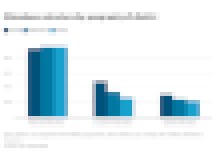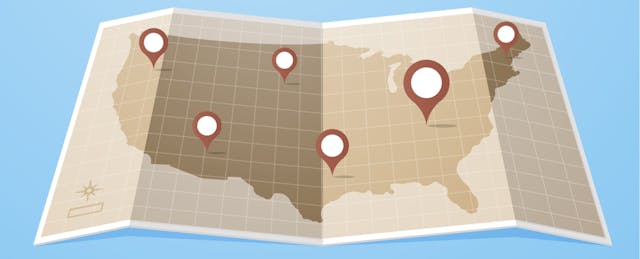It’s back-to-school season. But with the COVID-19 pandemic still raging in the U.S., classes are shaping up to look very different this year. For starters, many students won’t actually go into a school building. Instead, they will participate in fully remote instruction.
That’s a key finding from an EdSurge/Social Context Labs analysis of 375 school district reopening plans from around the country and across a diversity of geographies, COVID-19 infection rates and poverty levels. As of Sept. 3, we found that 356 districts (95%) planned to offer remote instruction. Meanwhile, just 137 planned in-person instruction. Fewer still—104 (28%)—planned to offer hybrid instruction in which students split time learning remotely and in-person. (See Figure 1).
These findings are reflected in other analyses of district plans, such as that from the Center for Reinventing Public Education (CRPE) at the University of Washington at Bothell. A CRPE report from last month that examined a nationally representative sample of 477 school districts found a similar breakdown, with 85% of districts planning to offer remote instruction. As in our analysis, the CRPE report found a minority of districts are planning to offer in-person or hybrid options.

Most of the districts in our analysis that plan to offer remote instruction also have in-person and hybrid options available for students. But remote instruction is the only option available for students in 157 districts in our database (42%). (See Figure 2).
On the other hand, we found no districts whose plans conclusively indicate that they would offer hybrid instruction-only or in-person instruction-only without another option available.

Rural Districts More Likely to Offer In-Person Learning, Choice
Close to half of the rural districts in our database (57 of 118) plan to offer in-person instruction. That stands in contrast to urban districts, where only about a quarter of districts plan to offer in-person instruction, or suburban districts, where only about a third of districts plan to do so. (See Figure 3.) This finding is also consistent with the CRPE report.

While rural districts offer in-person instruction—typically as a choice—urban districts in our database tend to gravitate toward virtual learning. Over half of urban districts released plans for remote instruction-only. Suburban districts fell somewhere in the middle. (See Figure 4.)

When compared with urban districts, a greater percentage of rural districts in our database plan to offer families a choice between at least two of the three attendance models we’re tracking. Because so many urban districts offer remote instruction-only, choice is less common among urban districts. Suburban districts, again, fall somewhere in between. (See Figure 5.)

Districts’ plans are changing by the day. It’s impossible to guess how long these trends will hold. But for now, remote learning is the name of the game for back-to-school, even with some variation by geography.


